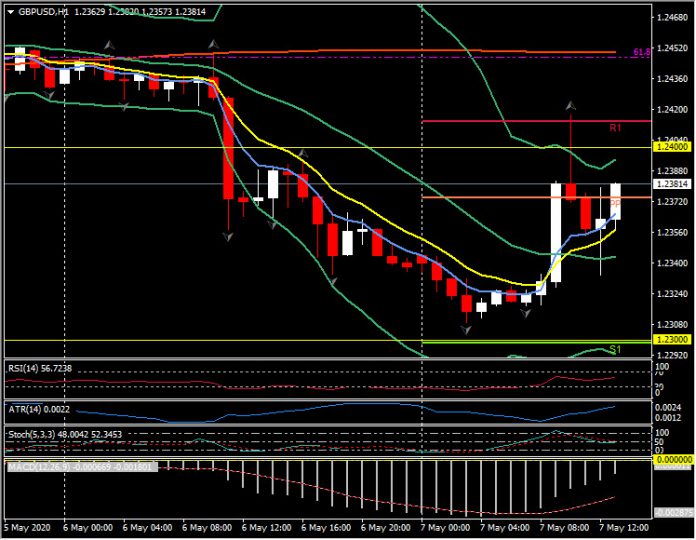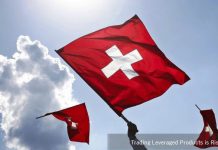GBPUSD, H1
BoE left the bank rate unchanged, and the asset purchase target was also left untouched at GBP 645 bln. After the bank slashed rates to now 0.1%, that was widely expected. There was dissent in the vote on bond buying, with 2 members – Haskel and Saunders – voting to increase purchases by a further GBP 100 bln as current QE is expected to reach its target by the beginning of July. The updated inflation forecasts brought sharp downward revisions for this year. Investment is expected to drop 26% and consumer spending 14%, with unemployment set to rise to 8%. Overall GDP is seen down 14% this year, but the BoE expects a rise of 15% in 2021. Inflation meanwhile could fall below 1% in the coming months and average just 0.6% this year, but the central bank expects the measure to rise back to 2% over the next two years. So the central scenario is a sharp, temporary slump with a slow recovery.
The BoE Governor Bailey in his post-meeting press conference emphasized that the central bank is not out of monetary policy ammunition, while pledging that appropriate policy responses will be taken going forward. He also said that information about the easing in lockdown measures will be material at the June meeting of the Monetary Policy Committee. Bailey also noted that the BoE will reach its current QE target by July. In sum, the BoE is in a wait-and-see stance, having already slashed its policy repo interest rate to near zero while expanding its QE programme and putting in liquidity measures in response to the economic and financial consequences of the pandemic-forced economic lockdown. Policymakers are now closely monitoring the impact of economic reopening, both domestically and abroad.
Politically, the UK government have promised a plan, to be announced by PM Johnson on Sunday, to detail the first phase of reopening, (the UK has been in lockdown since March 23rd) with some limited measures starting as early as Monday. However, the UK data remains very concerning. It has the highest number of daily deaths outside of the USA, with official data showing the highest number of deaths for any European country (over 30,000), the highest death rate per million of population (8.9) and the largest “excess deaths” (42,900) when compared to historical averages for March and April.¹
The Pound lifted on the forecast for a rebound next year from the BOE. Cable tested 1.2415 but has subsequently slumped to 1.2370 following Governor Bailey’s press conference. Sterling has developed a distinct pandemic-era characteristic of correlating closely with global stock market direction (i.e. risk appetite), similar to a high beta commodity currency. While Cable is up by about 8.5% from the 35-year low seen in mid March, the pair remains down by about 6.5% on the year-to-date, and this is the first time since the 1980s that the Pound has consistently traded below 1.3000.
¹https://www.ft.com/content/a26fbf7e-48f8-11ea-aeb3-955839e06441
Click here to access the HotForex Economic Calendar
Stuart Cowell
Head Market Analyst
Disclaimer: This material is provided as a general marketing communication for information purposes only and does not constitute an independent investment research. Nothing in this communication contains, or should be considered as containing, an investment advice or an investment recommendation or a solicitation for the purpose of buying or selling of any financial instrument. All information provided is gathered from reputable sources and any information containing an indication of past performance is not a guarantee or reliable indicator of future performance. Users acknowledge that any investment in Leveraged Products is characterized by a certain degree of uncertainty and that any investment of this nature involves a high level of risk for which the users are solely responsible and liable. We assume no liability for any loss arising from any investment made based on the information provided in this communication. This communication must not be reproduced or further distributed without our prior written permission.



















